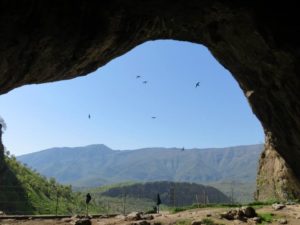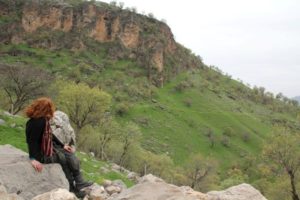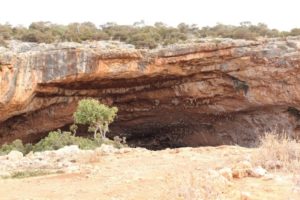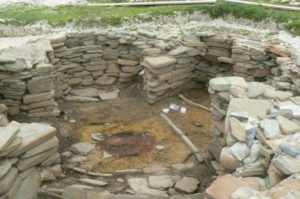Hello, I’m Hazel and I will be at QUB working on creating a geospatial database of palaeoenvironmental data for Shetland in the Neolithic (from the early 4th millennium BC to around 2000BC). Using pollen analysis and other proxies we hope to collect new high-resolution palaeoecological information from cores taken at key locations in Shetland which will be integrated with existing records using GIS to examine temporal and regional variability in vegetation and local environmental conditions.
Since I finished my Archaeology BSc in 2005 I have worked as a commercial field archaeologist. I always intended to go back to university after “a couple of years digging” but for 13 years I was having too much fun, though this not only took me to some spectacular places (Sweden, Italy, Libya, Westray in Orkney, Iraqi Kurdistan) but also enabled me to have a r e a l l y l o n g think about what it is I actually want to do when my knees finally seize up.
I have always had strong interests in prehistory, particularly the Neolithic, in environmental archaeology and in palaeoecology so I was elated to be selected for this PhD project. My 2019 MSc dissertation used multiple analytical techniques to examine early Holocene environmental variability on Lismore in the Inner Hebrides so I will be able to build on the skills I learned then and develop new ones in GIS mapping and geospatial analysis.
This project will provide important environmental detail for studies considering the development of Neolithic society and culture in Shetland, in particular, the mining and tool-manufacturing industry that developed to exploit outcrops of riebeckite felsite (a fine-grained igneous rock) in the north-west of the island of Mainland. Overall, tree cover was regionally in decline during this period but although the relationship between an axe-manufacturing industry and deforestation may superficially appear to be straightforward it is likely that the reality was more complex, with climate change, paludification and human agency all being implicated. Mid-Holocene changes in the vegetation of Shetland (and of other islands around northern and western Scotland) were diachronous and locally variable; collation of existing data and refinement of local patterns and chronologies are necessary in order to better understand the interconnectivity between people and landscape.
I’ve never been to Shetland before so I’m really excited to get started on the fieldwork, (COVID-permitting!) and get a feel for the present-day landscape of the islands. I had also never really been to Belfast before I came for my interview so I’ve got plenty of exploring to do…

























































